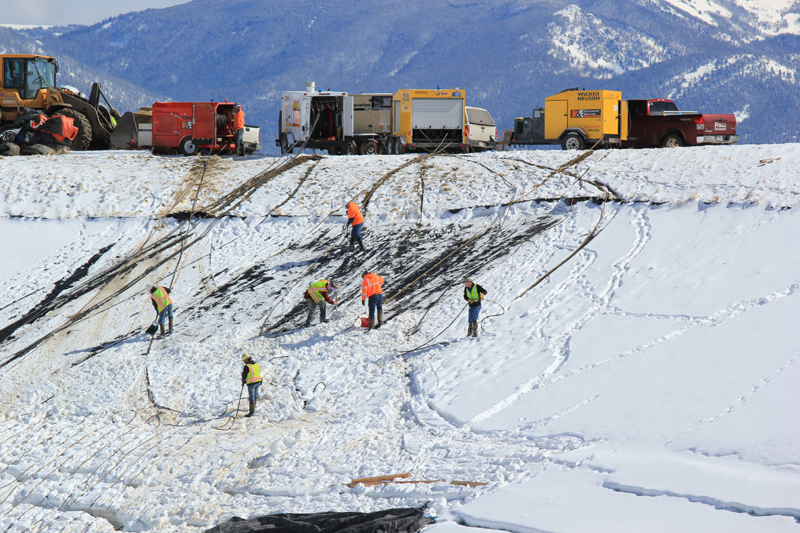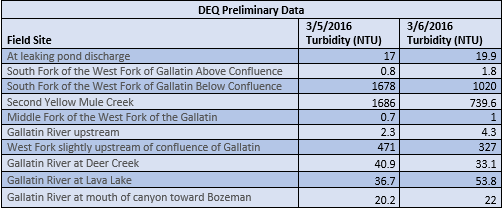Great news! The discharge from the Yellowstone Club wastewater effluent storage pond stopped at around 4:30 AM this morning. Rivers and streams within the watershed are visibly clearer. Residual flow from melting ice continues to trickle out of the outfall zone.

Crews assessing and containing the effluent pond spill. Photo courtesy of the Big Sky Water and Sewer District.
Crews are hard at work assessing the damage to the outlet pipe and pond lining. Meanwhile, the Montana Department of Environmental Quality, Gallatin River Task Force, and Confluence Consulting, Inc. continue to monitor the rivers and streams affected by the spill. Monitoring will proceed until conditions return to baseline. Laboratory results will begin to trickle in mid-week; however, some preliminary data is now available.
The Montana Department of Environmental Quality (DEQ) released turbidity data from the weekend. Turbidity is a measure of how clear the water is. The amount of particles suspended in water – such as clay, silt, sand, algae, plankton, and microbes – cause turbidity to increase.
In general, DEQ results documented increases in turbidity that far exceeded the 5 NTU increase standard. Throughout the weekend, turbidity decreased closest to the source and increased farther downstream. As sediment-laden effluent moves through the system, water will gradually clear from upstream to downstream.
In addition, the Gallatin River Task Force South Fork continuous monitoring station recorded a decrease in specific conductance (the amount of charged particles in water) at 5:30 AM this morning. The rivers are responding to decreased flow from the effluent pond.
Stay tuned for more information! We will continue to update this site as we learn more.



